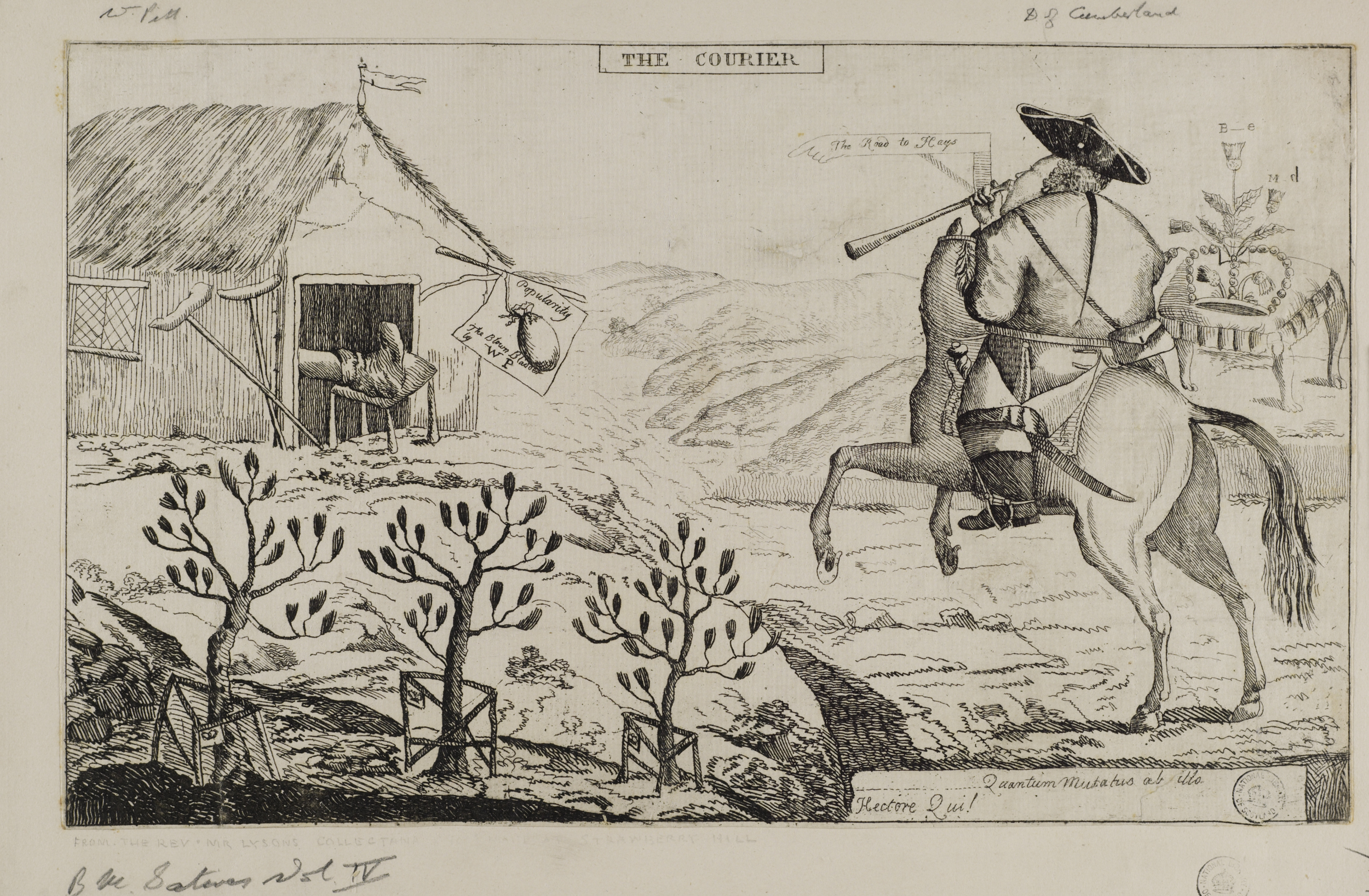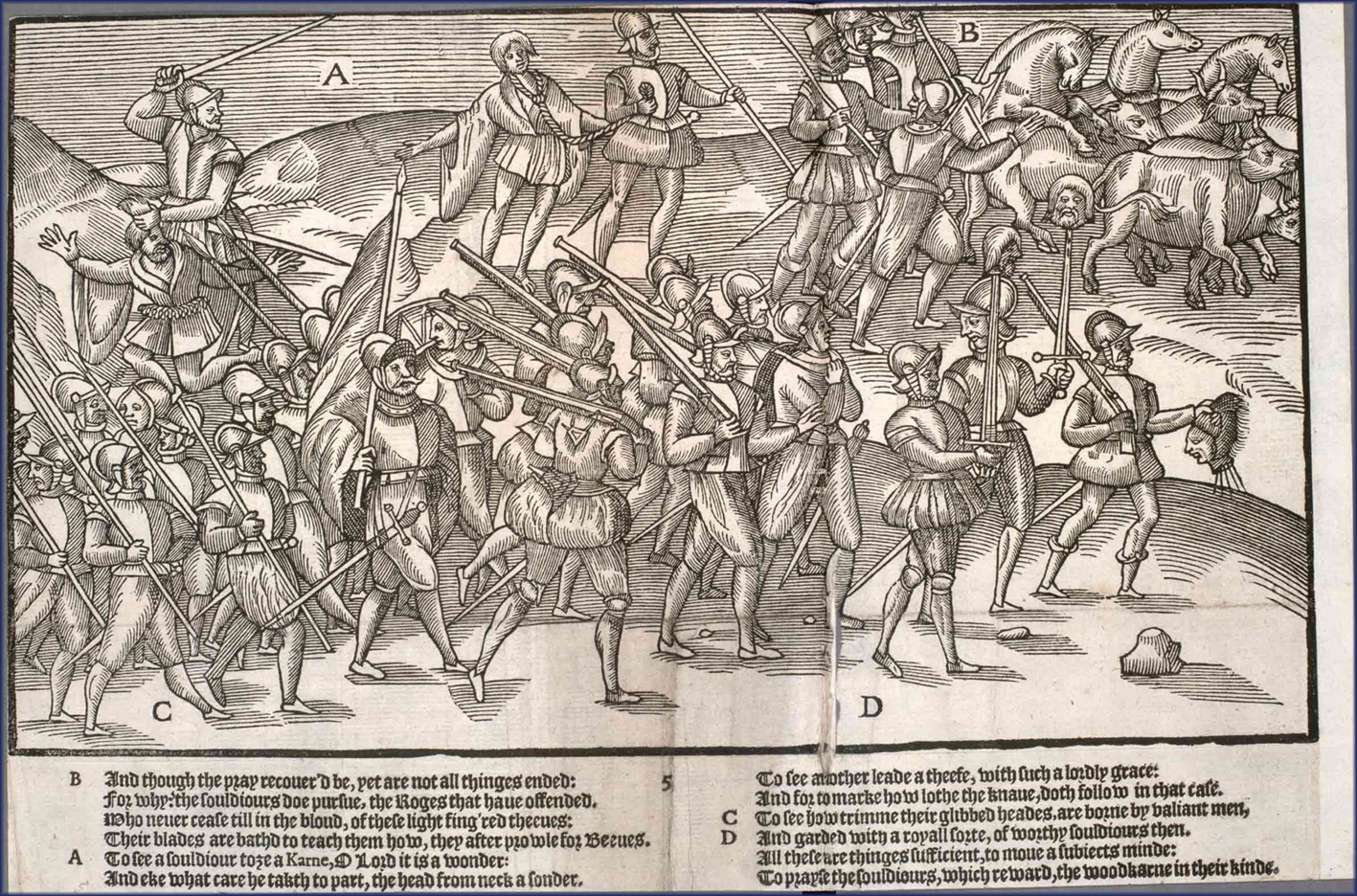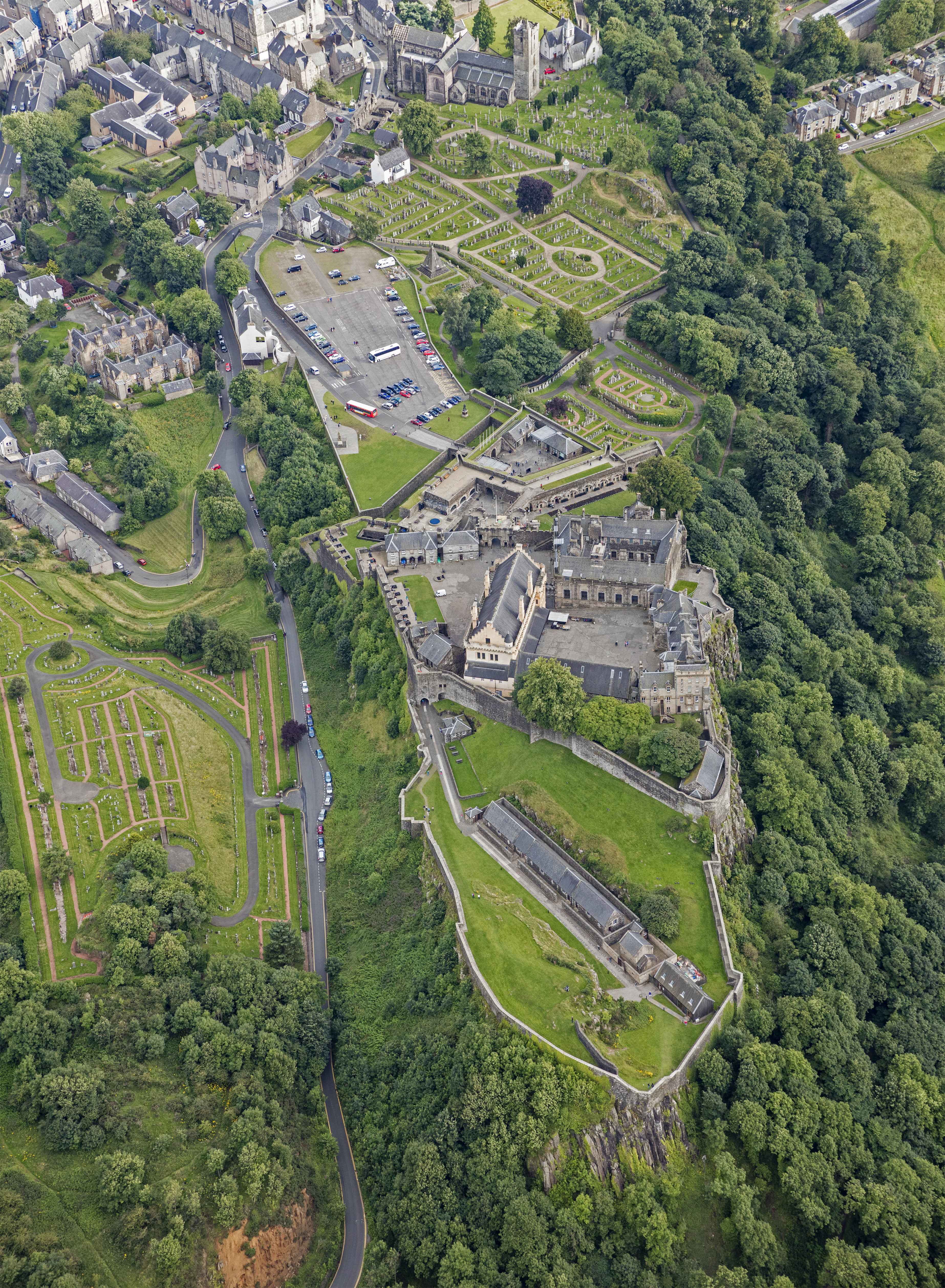|
Prince William, Duke Of Cumberland
Prince William Augustus, Duke of Cumberland (15 April 1721 Old_Style_and_New_Style_dates.html" ;"title="/nowiki>Old Style and New Style dates">N.S./nowiki> – 31 October 1765) was the third and youngest son of Great Britain and Kingdom of Ireland">Ireland and his wife, Caroline of Ansbach. He was Duke of Cumberland from 1726. He is best remembered for his role in putting down the Jacobite rising of 1745, Jacobite Rising at the Battle of Culloden in 1746, which made him popular in certain parts of Britain. He is often referred to by the nickname given to him by his Tory opponents: 'Butcher' Cumberland. For much of the War of the Austrian Succession, with the assistance of John Ligonier, Cumberland commanded the main allied field army in Flanders acting in defence of the Austrian Netherlands and the Dutch Republic. At the head of the largest deployment of British troops on the continent since the days of Marlborough and opposed to the experienced French Marshal Maurice de Saxe ... [...More Info...] [...Related Items...] OR: [Wikipedia] [Google] [Baidu] |
Duke Of Cumberland
Duke of Cumberland is a peerage title that was conferred upon junior members of the British royal family, named after the historic county of Cumberland. History The Earldom of Cumberland, created in 1525, became extinct in 1643. The dukedom was created in the Peerage of England in 1644 for Prince Rupert of the Rhine, nephew of King Charles I. When he died without male heirs, the title was created again in the Peerage of England in 1689 for Prince George of Denmark, husband of Princess Anne, younger daughter of King James II. He also died without heirs, in 1708. Neither of these men, however, was usually known by his peerage title. The third creation, in the Peerage of Great Britain, was for Prince William, the third son of King George II. Other titles granted to Prince William were ''Marquess of Berkhampstead'', ''Earl of Kennington'', ''Viscount Trematon'' and ''Baron Alderney''. Since the Prince died unmarried and without children, his titles became extinct at his death. ... [...More Info...] [...Related Items...] OR: [Wikipedia] [Google] [Baidu] |
Battle Of Dettingen
The Battle of Dettingen took place on 27 June 1743 during the War of the Austrian Succession, near Karlstein am Main in Bavaria. An alliance composed of British, Hanoverian and Austrian troops, known as the Pragmatic Army, defeated a French force commanded by the Duke of Noailles. While the Earl of Stair exercised operational control, the Allies were nominally commanded by George II of Great Britain, and Dettingen was the last time a reigning British monarch led troops in combat. The battle had little impact on the wider war, and has been described as 'a happy escape, rather than a great victory.' Background The immediate cause of the War of the Austrian Succession was the death in 1740 of Emperor Charles VI, last male Habsburg in the direct line, leaving his eldest daughter, Maria Theresa, as heir to the Habsburg monarchy. Since Salic law barred women from the Habsburg succession, the Imperial Diet passed the Pragmatic Sanction of 1713 allowing Maria Theresa to inherit, ... [...More Info...] [...Related Items...] OR: [Wikipedia] [Google] [Baidu] |
University Of Glasgow
The University of Glasgow (abbreviated as ''Glas.'' in Post-nominal letters, post-nominals; ) is a Public university, public research university in Glasgow, Scotland. Founded by papal bull in , it is the List of oldest universities in continuous operation, fourth-oldest university in the English-speaking world and one of Scotland's four Ancient universities of Scotland, ancient universities. Along with the universities of University of St Andrews, St Andrews, University of Aberdeen, Aberdeen, and University of Edinburgh, Edinburgh, the university was part of the Scottish Enlightenment during the 18th century. Glasgow is the List of universities in Scotland, second largest university in Scotland by total enrolment and -largest in the United Kingdom. In common with universities of the pre-modern era, Glasgow originally educated students primarily from wealthy backgrounds; however, it became a pioneer in British higher education in the 19th century by also providing for the needs o ... [...More Info...] [...Related Items...] OR: [Wikipedia] [Google] [Baidu] |
Kingdom Of Ireland
The Kingdom of Ireland (; , ) was a dependent territory of Kingdom of England, England and then of Kingdom of Great Britain, Great Britain from 1542 to the end of 1800. It was ruled by the monarchs of England and then List of British monarchs, of Great Britain, and was Dublin Castle administration, administered from Dublin Castle by a viceroy appointed by the English king: the lord deputy of Ireland. Aside from brief periods, the state was dominated by the Protestant English (or Anglo-Irish people, Anglo-Irish) minority, known as the Protestant Ascendancy. The Protestant Church of Ireland was the state church. The Parliament of Ireland was composed of Anglo-Irish nobles. From 1661, the administration controlled an Irish Army (1661–1801), Irish army. Although ''de jure'' styled as a kingdom, for most of its history it was ''de facto'' an English Dependent territory, dependency (specifically a viceroyalty). This status was enshrined in the Declaratory Act 1719, also known as th ... [...More Info...] [...Related Items...] OR: [Wikipedia] [Google] [Baidu] |
Kingdom Of Great Britain
Great Britain, also known as the Kingdom of Great Britain, was a sovereign state in Western Europe from 1707 to the end of 1800. The state was created by the 1706 Treaty of Union and ratified by the Acts of Union 1707, which united the Kingdom of England (including Wales) and the Kingdom of Scotland to form a single kingdom encompassing the whole island of Great Britain and its outlying islands, with the exception of the Isle of Man and the Channel Islands. The unitary state was governed by a single Parliament of Great Britain, parliament at the Palace of Westminster, but distinct legal systems—English law and Scots law—remained in use, as did distinct educational systems and religious institutions, namely the Church of England and the Church of Scotland remaining as the national churches of England and Scotland respectively. The formerly separate kingdoms had been in personal union since the Union of the Crowns in 1603 when James VI of Scotland became King of England an ... [...More Info...] [...Related Items...] OR: [Wikipedia] [Google] [Baidu] |
Battle Of Hastenbeck
The Battle of Hastenbeck (26 July 1757) was fought as part of the Invasion of Hanover during the Seven Years' War between the allied forces of Hanover, Hesse-Kassel (or Hesse-Cassel) and Brunswick, and the French. The allies were defeated by the French army near Hamelin in the Electorate of Hanover. Prelude The French, who were allied with Austria, Russia, Sweden and Saxony during the Seven Years' War, invaded Germany in April 1757 with two armies, altogether about 100,000 soldiers. The French hoped to draw the attention of the Kingdom of Prussia, which was allied with Britain and Hanover, away from the Bohemian theatre where Prussia and Austria fought several battles ( Lobositz, Prague, Kolin). One of the two French armies under command of Prince de Soubise marched through central Germany. It joined the Imperial Army, or "Reichsarmee", commanded by Prinz von Hildburghausen. This coalition army later met a Prussian army at the Battle of Rossbach on 5 November 1757 with ... [...More Info...] [...Related Items...] OR: [Wikipedia] [Google] [Baidu] |
Seven Years' War
The Seven Years' War, 1756 to 1763, was a Great Power conflict fought primarily in Europe, with significant subsidiary campaigns in North America and South Asia. The protagonists were Kingdom of Great Britain, Great Britain and Kingdom of Prussia, Prussia versus Kingdom of France, France and Habsburg monarchy, Austria, the respective coalitions receiving by countries including Portuguese Empire, Portugal, Spanish Empire, Spain, Electorate of Saxony, Saxony, Age of Liberty, Sweden, and Russian Empire, Russia. Related conflicts include the Third Silesian War, French and Indian War, Carnatic wars, Third Carnatic War, Anglo-Spanish War (1762–1763), Anglo-Spanish War (1762–1763), and Spanish–Portuguese War (1762–1763), Spanish–Portuguese War. Although the War of the Austrian Succession ended with the Treaty of Aix-la-Chapelle (1748), none of the signatories were happy with the terms, and it was generally viewed as a temporary armistice. It led to a strategic realignment kn ... [...More Info...] [...Related Items...] OR: [Wikipedia] [Google] [Baidu] |
Raids On Lochaber And Shiramore
The Raids on Lochaber and Shiramore () ("The Year of the Pillaging") took place in the Scottish Highlands between 22 May and 31 August 1746 and were part of the closing operations of the British-Hanoverian Government to bring to an end the Jacobite rising of 1745. Sometimes referred to as the "mopping up" operations, many rebels, forced to come of out of hiding by a scorched earth campaign by government troops, surrendered themselves and their arms, while others remained at large until they were captured and punished. It also included the hunt for the Jacobite leader ''Bonnie Prince'' Charles Edward Stuart otherwise known as the ''Young Pretender''. Most of the work was done on behalf of the Government by the Independent Highland Companies of militia, the Campbell of Argyll Militia and also Loudon's Highlanders regiment. Background The Jacobite rising of 1745 had ultimately been defeated at the Battle of Culloden that took place on 16 April 1746, not far from Inverness.Pollard ... [...More Info...] [...Related Items...] OR: [Wikipedia] [Google] [Baidu] |
Battle Of Culloden
The Battle of Culloden took place on 16 April 1746, near Inverness in the Scottish Highlands. A Jacobite army under Charles Edward Stuart was decisively defeated by a British government force commanded by the Duke of Cumberland, thereby ending the Jacobite rising of 1745. Charles landed in Scotland in July 1745, seeking to restore his father James Francis Edward Stuart to the British throne. He quickly won control of large parts of Scotland, and an invasion of England reached as far south as Derby before being forced to turn back. However, by April 1746, the Jacobites were short of supplies, facing a superior and better equipped opponent. Charles and his senior officers decided their only option was to stand and fight. When the two armies met at Culloden, the battle was brief, lasting less than an hour, with the Jacobites suffering an overwhelming and bloody defeat. This effectively ended both the 1745 rising, and Jacobitism as a significant element in British politics. Ba ... [...More Info...] [...Related Items...] OR: [Wikipedia] [Google] [Baidu] |
Siege Of Stirling Castle (1746)
The siege of Stirling Castle took place from 8 January to 1 February 1746, during the Jacobite rising of 1745, 1745 Rising, when a Jacobite force besieged Stirling Castle, held by a government garrison under William Blakeney, 1st Baron Blakeney, William Blakeney. Despite defeating a relief force under Henry Hawley at Battle of Falkirk Muir, Falkirk Muir on 17 January, the siege made little progress; when Prince William, Duke of Cumberland, Cumberland's army began advancing north from Edinburgh, it was abandoned and on 1 February the Jacobites withdrew to Inverness. Background One of the strongest fortifications in Scotland, Stirling Castle controlled access between the Scottish Highlands, Highlands and the Scottish Lowlands, Lowlands. In September 1745, the Jacobite army passed nearby en route to Edinburgh, but had neither the time nor the equipment needed to take it. Leaving William Drummond, 4th Viscount Strathallan, Viscount Strathallan in Perth, Scotland, Perth to recruit a ... [...More Info...] [...Related Items...] OR: [Wikipedia] [Google] [Baidu] |
Siege Of Carlisle (December 1745)
The siege of Carlisle (December 1745) took place from 21 to 30 December during the Jacobite rising of 1745, when a Jacobite Army (1745), Jacobite garrison surrendered to government forces led by the Prince William, Duke of Cumberland, Duke of Cumberland. The town had been Siege of Carlisle (November 1745), captured by the Jacobite army that invaded England in November 1745 and reached as far south as Derby, before turning back on 6 December. They re-entered Carlisle on 19 December, and after leaving a garrison of 400 men, the main army continued its retreat into Scotland the next day. Advance elements of the government army reached Carlisle on 21 December, but siege operations were delayed until their heavy artillery arrived six days later. They commenced firing on 28 December, and the Jacobites surrendered on 30th; 384 prisoners were taken, some of whom were later executed and others transported to the West Indies. Background The Jacobite Army (1745), Jacobite army entered ... [...More Info...] [...Related Items...] OR: [Wikipedia] [Google] [Baidu] |
Clifton Moor Skirmish
The Battle of Clifton Moor took place on the evening of Wednesday 18 December during the Jacobite rising of 1745. Following the decision to retreat from Derby on 6 December, the fast-moving Jacobite army split into three smaller columns; on the morning of 18th, a small force of dragoons led by Cumberland and Sir Philip Honywood made contact with the Jacobite rearguard, at that point commanded by Lord George Murray. Murray ordered his baggage train to continue its retreat towards Penrith while he delayed Cumberland's force. The action did not begin until late afternoon, in failing light and heavy rain; while technically a draw, it enabled Murray to retreat in good order and escape into Scotland. The battle was the last battle on English soil. Background; the retreat from Derby The Jacobite Army stayed on the first night of retreat at Ashbourne, Derbyshire. They reached Leek the following day: on the 9th, both Jacobite divisions met on the road to Manchester. The Jacobi ... [...More Info...] [...Related Items...] OR: [Wikipedia] [Google] [Baidu] |






